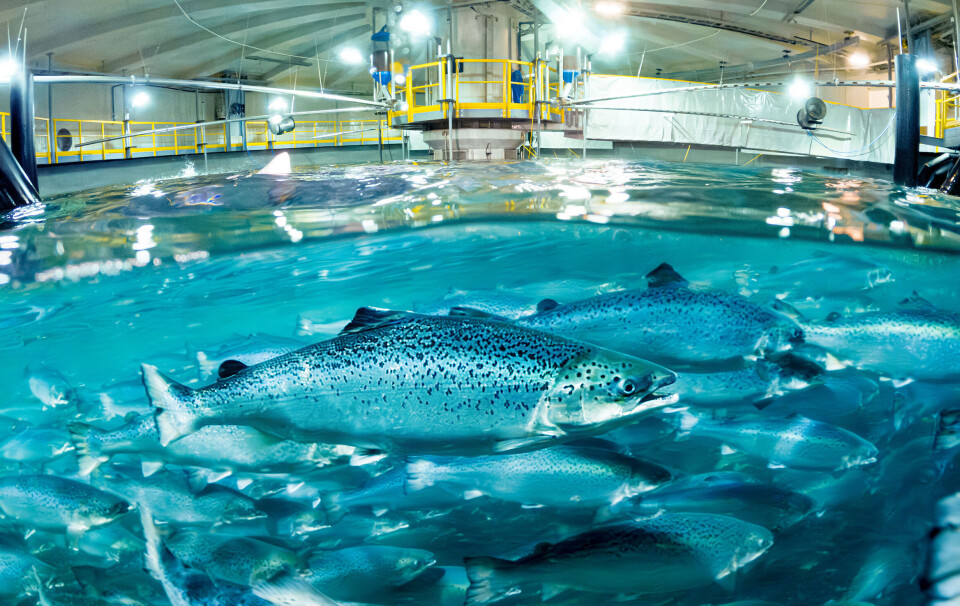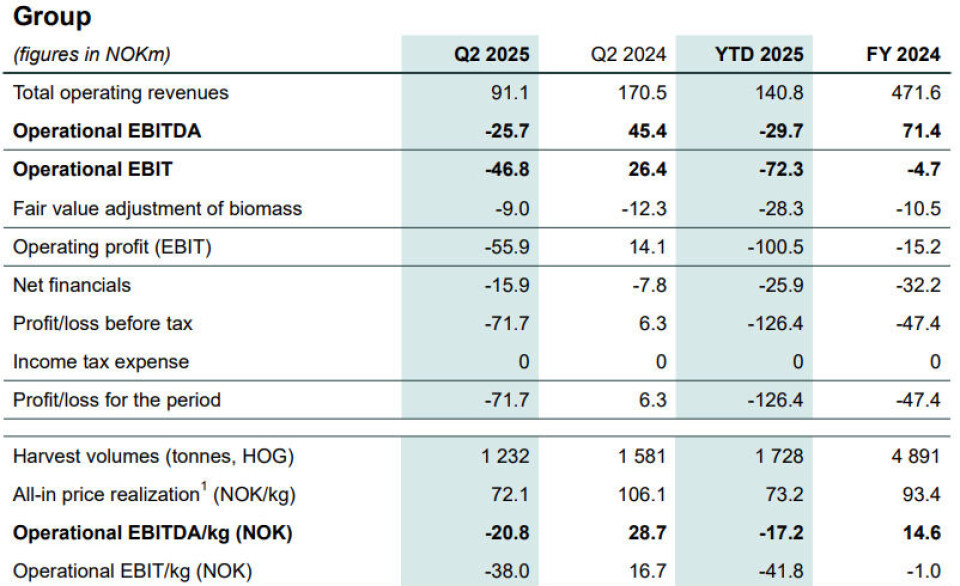
Low prices and harvest of weak batch hurt Salmon Evolution in Q2
Land-based fish farmer made operating loss of £3.4 million
Land-based fish farmer Salmon Evolution made an operating loss of NOK 46.8 million (£3.4m) in the second quarter of this year due to weak salmon prices and temporarily higher farming costs due to non-recurring factors related to harvest of underperforming groups affected by smolt quality issues last year.
The Norwegian company harvested 1,232 tonnes HOG (head on gutted) and brought in revenues of NOK 91.1m, but all-in price realisation was just NOK 72.1/kg, down from NOK 106.1/kg in the same period last year. EBIT/kg was -38 NOK (Q2 2024: 16.7 NOK).
The underperforming groups affected by last year’s smolt quality issues were fully harvested in Q2 and represented a significant share of the harvested biomass in the quarter.
Price realisation on harvested fish was impacted by timing of harvest and large fluctuations in spot prices during the quarter. Average harvest weight (HOG) was 2.9 kg and superior share was 95%.
Minimal mortality
Salmon Evolution, which uses a hybrid recirculation flow-through system at its facility on the island on Indre Harøy, said it maintained stable operations, a fully stocked farm, and minimal mortality.
Biomass composition was fully normalised during the quarter, positioning Salmon Evolution for continued positive development in operational key performance indicators and harvest weights in coming periods.
“With a strong operational platform at the core we will continue to scale production, harvest and harvest weights,” said chief executive Trond Håkon Schaug-Pettersen. “We are well positioned to capitalise on an expected salmon price recovery in 2026.”

Phase 2 on track
Salmon Evolution continued good progress in the phase 2 expansion project at Indre Harøy, and the project remains on track for targeted first smolt release in Q1 2026 and first harvest in Q4 next year.
“Momentum at the construction site remained strong throughout the quarter with installation of both intake pipes being a highlight,” said Schaug-Pettersen. “With Phase 2 we are creating a unique operational platform and the first smolt release is only about seven months away.”
The fully completed and operational Phase 1 of Salmon Evolution’s facility has an annual production capacity of 7,900 tonnes HOG, and Phase 2 will add a further 10,100 tonnes HOG. A third phase for another 18,000 tonnes HOG has full permission from the authorities but has not yet been funded.